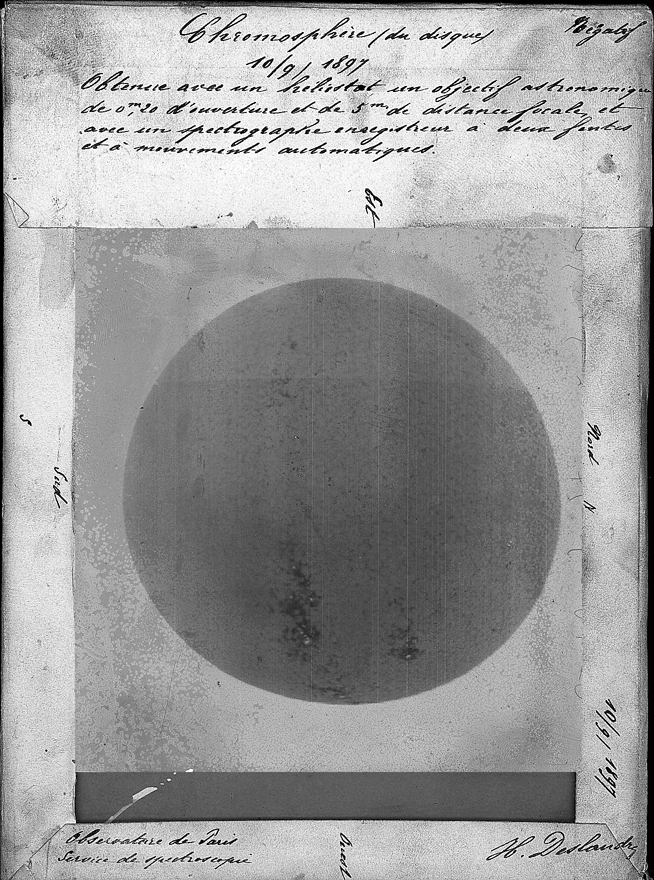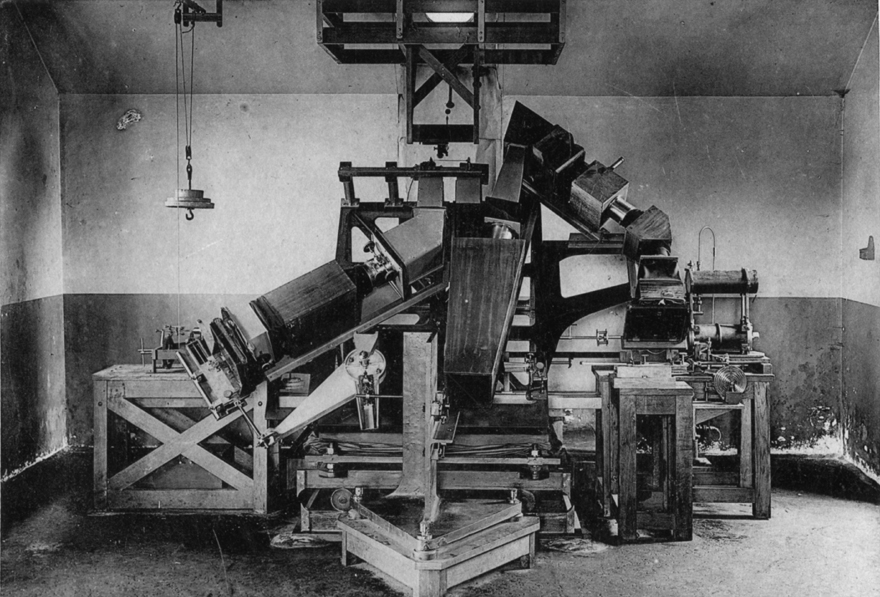Soon after the solar eclipse of August 18th 1868, Jules Janssen had the idea of selecting out the hydrogen Hα line (then called the C line). By isolating this narrow part of the optical spectrum, it becomes possible to see prominences in the chromosphere even without an eclipse.
In 1889, Henri Deslandres was integrated into the Observatoire de Paris in order to develop spectroscopy. Starting from one of Jules Janssen’s ideas, he built in 1892 an instrument which could register photographically images of the whole chromosphere, which were nevertheless limited to a few specific spectral lines. He had just invented the spectroheliograph – which had been invented independently by the American George Ellery Hale.

In 1897, Deslandres came to the Observatoire de Meudon, which he directed after the death of Janssen in 1907. He continued to work on chromospheric photography, and had built the existing spectroheliograph building, which was inaugurated in 1909.
A two mirror cœlostat sends the light of the Sun towards an objective lens placed in an opening in the southern wall of the building. This 25cm objective focusses an image on the entrance slit of the spectroheliograph.
A displacement of the objective lens causes the solar image to pass in front of the entrance slit. In time with this motion, a photographic plate slid behind a slit placed at the spectral line. The result was an image of the Sun taken at the given wavelength.
Since 2003, a CCD camera records the signal from a row of pixels placed along the spectral line. The set of signals recorded by the camera is then analyzed by software in order to reconstruct the monochromatic image of the chromosphere.
The images are made in the Hα line in order to see the filaments and prominences, but also in the calcium K line at 393.3nm in order to highlight the faculae. Another picture, taken in the wings of the calcium line, shows the brightest sunspots and faculae.
Starting from 1909, the Meudon spectroheliogram collection is the most important in the world. The systematic observation of the Sun is a service activity at the Observatoire de Paris.


